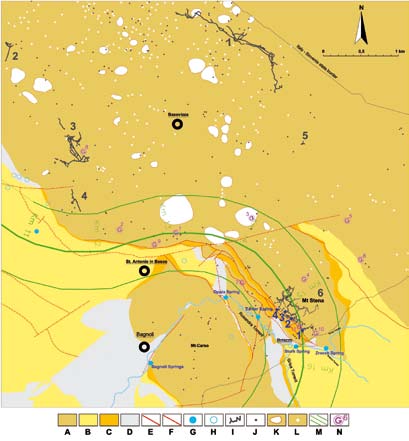Potential impact of a proposed railway tunnel on the karst environment: The example of Rosandra valley, Classical Karst region, Italy-Slovenia
DOI:
https://doi.org/10.3986/ac.v40i1.38Abstract
Val Rosandra is a unique geomorphological environment located on the western side of the Classical Karst Plateau (NE Italy). This deep limestone gorge is crossed by a stream that is fed by a large basin located in Slovenia. Val Rosandra is the only example of a karst river valley withsurface hydrography in the Classical Karst Plateau. The torrent that crosses it digs a deep gully into the rock, richin rapids, swirl holes, small waterfalls, enclosed meanders and basins; here, the first seepage phenomena occur, and part of the water feeds the underground aquifer.Val Rosandra is characterised by a complex structural situation. The NE slope culminates in the structure of Mt. Stena, a limestone tectonic wedge between two faults, firmly rooted in the karst platform. Bothits external morphology and its caves are influenced by the structure, i.e. by the attitude of bedding planes, fault planes and master joints. Mt. Stena, in particular, hosts a comprehensive net of articulated and diversely shaped caves, basically organised on several levels. This network stretches over a total of 9,000 metres, bearing testimony to ancient geological and hydrogeological origins.The deepest areas of the system reacha suspended aquifer that is probably sustained by an overthrust and placed about 100 meters above the underground aquifer of the Rosandra torrent.A series of feasibility studies on the Trieste-Divača high-speed railway link concentrated on the potential interaction between the project and karst features. In line withthe project requirements, risk of voids intersection and water contamination were analyzed as Mt. Stena’s suspended aquifer partially feeds the Rosandra torrent, whichflows in a protected natural area. We therefore suggest that further investigations ought to be performed to integrate the existing knowledge on karst and on the hydrogeological aspects of the massif.
Downloads

Downloads
Published
How to Cite
Issue
Section
License
Authors guarantee that the work is their own original creation and does not infringe any statutory or common-law copyright or any proprietary right of any third party. In case of claims by third parties, authors commit their self to defend the interests of the publisher, and shall cover any potential costs.
More in: Submission chapter




